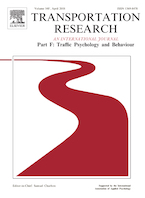Exploring the causes of frequent accidents at highway tunnel exits: Coupling analysis of the slack effect and white hole effect in extra-long tunnels
- Autores: Yongzheng Yang, Zhigang Du, Francisco Alonso, Mireia Faus, Jialin Mei (2024).
- Tipos de publicación: Article
- URL Publicación: Exploring the causes of frequent accidents at highway tunnel exits: Coupling analysis of the slack effect and white hole effect in extra-long tunnels
- Título Publicación (nombre del libro o revista): Transportation Research Part F: Psychology and Behaviour. Num.106:288-305
-
Resumen:
In this paper, the causes of frequent traffic accidents at the exits of highway tunnels are inves-tigated. This study recruited 34 subjects to conduct vehicle experiments using an illuminationmeter, eye tracker, Smarter Eye and OBD to measure the illumination, eye movement charac-teristics, driving trajectory, and speed while driving in a tunnel exit. A questionnaire was used toinvestigate drivers’ subjective feelings while driving. The change trend of each indicator in thearea near the tunnel exit was analyzed, and the relationships among the light environment, driverphysiology, driving behavior, and driver psychology were explored. The psychological andphysiological inconsistency phenomenon and abnormal acceleration behavior were observed atthe tunnel exit, and the slack effect was verified. As the tunnel exit area is driven through, withthe rapid increase in illumination, the rate of change of the driver’s pupil area increases, and thedistance between the vehicle and the tunnel sidewall increases. It is unreasonable that in a tunnelexit with a poor traffic environment, some drivers experience psychological slack and tend toincrease their speed and accelerate out of the tunnel. The slack effect is observed in most drivers,approximately 79.4% of the total. The white hole effect interferes with drivers’ vision and reducestheir ability to obtain traffic information. The slack effect reduces drivers’ attention and increasesvehicle speed. A coupling effect exists between the white hole and slack effects, which togetherthreaten traffic safety at the tunnel exit
DOI: 10.1016/j.trf.2024.08.018ISSN: 1369-8478










